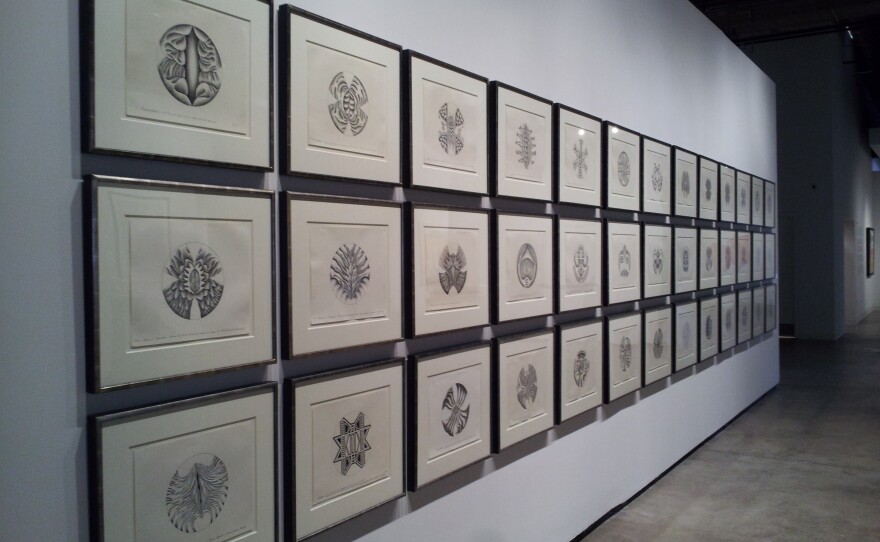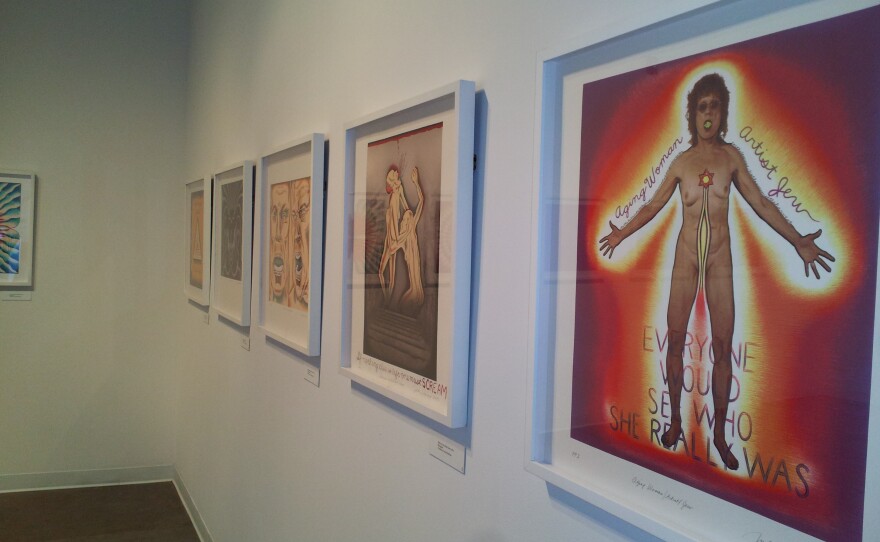Judy Chicago has long trumpeted the significant achievements of her gender. Often regarded as the mother of the feminist art movement, she – at 75 – is far more interested in work she's yet to conceive than her past labors.
"I've had a real battle," Chicago said reflecting on her career. "I've had reviews that are so awful the earth is supposed to open up and you are supposed to get into it, dig yourself underneath the ground, and never appear again."
That she refused to bury herself and continues to create new work inspired Denver's Red Line gallery to take a different approach to celebrating Chicago's career, five-decades in the making.
"She's an inspiration to the many forms of feminism that are in existence still today and also how that has relatives in other areas of Civil Rights, and Human Rights, and social equality that we still wrestle with on a world stage," said Louise Martorano, Red Line's Executive Director.
For their presentation of Surveying Judy Chicago, the gallery is differentiating itself from previous hosts of the retrospective. The Denver show includes the artists’ most recent work – Heads Up – ceramic, glass, and bronze sculptures, alongside work more commonly attributed to the artist, like The Dinner Party.
The breadth of work in the survey – oil paintings, embroidery, hand drawn sketches and more – provoked an array of responses from patrons who perused the gallery.
For Patsy Smith, a contemporary of Chicago's and artist in her own right, this was the first time she had seen the work in person.
“She was a woman before her time, expressing some of the thoughts and views of women that were quiet about it but had some of the views that she had,” Smith remarked.
The views Chicago expressed through her work, often done in collaboration with others, called on viewers to re-consider their ideas about birth, the holocaust, and the environment.
While Chicago invested in these different ideas through her artwork, and made significant contributions to educational curriculum, The Dinner Party often dominated others’ view of her artistic identity. It was a work that honored more than 1,000 women and their contributions to history and was Chicago's commentary on a patriarchal society's refusal to give women a seat at the table of history. It took five years and the help of more than 70 artists to complete.
For much of her career, she was frustrated though that conversation of her work began and ended with The Dinner Party. She credits a 2011 show at the Getty Museum in Los Angeles with helping to draft a wider narrative about her work. The result has been events like the survey at Red Line and the opportunity to continue to pursue goals left unfinished.
"Even though there have been dramatic changes in consciousness around gender and diversity that those changes have not been sufficiently translated into our museums or our universities, which continued to be male-centered, with a few women and people of color added on," Chicago said.
Women’s history and Chicago’s career may be inextricably linked but it is new ideas – whether generated in the classroom, studio, or conversations in art galleries – that she thrives on.
She admits to cringing at the thought of hearing, "Oh, her early work was better," yet Chicago chuckles at how she is now regarded.
"I got lousy reviews at every stage and now suddenly it’s all 'astounding?'" Chicago said. "What that taught me was, you just have to trust yourself and keep going."
Arts District is a collaboration of KUNC, RMPBS, and KUVO.















